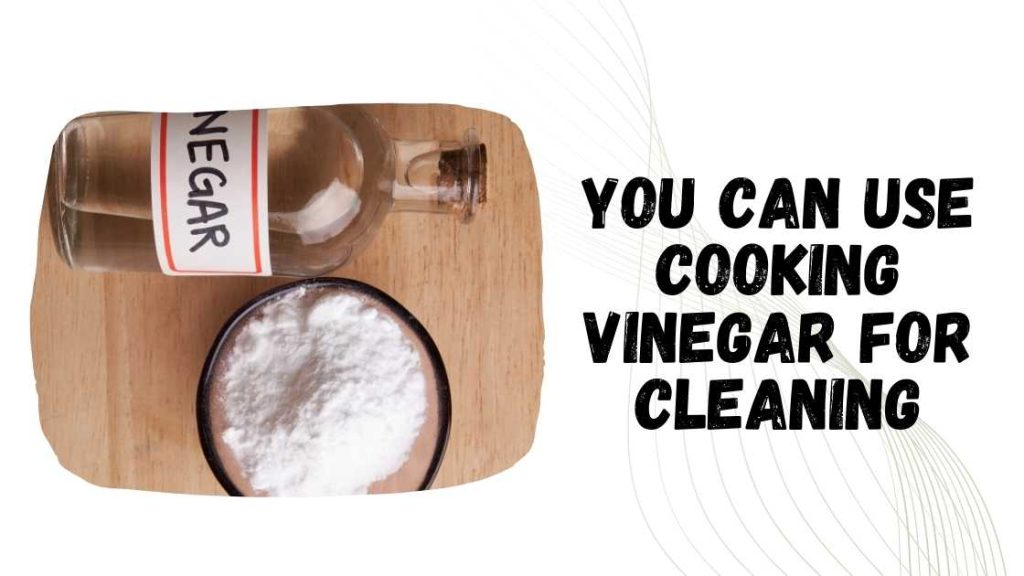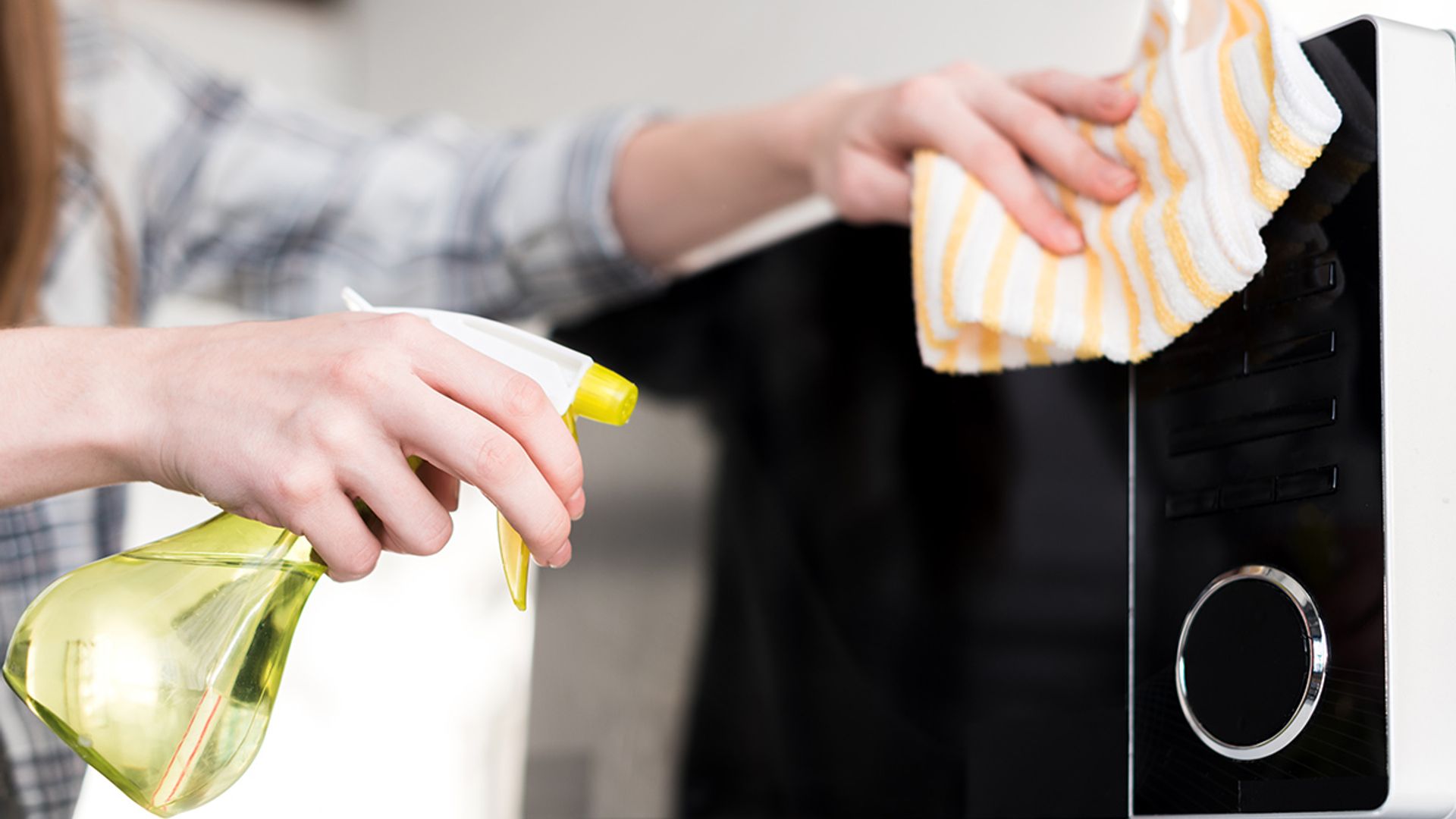Yes, you can use cooking vinegar for cleaning. It’s an effective and natural cleaner that can tackle various household tasks.
While cooking vinegar is a great choice for many cleaning tasks, it is not suitable for all surfaces. Avoid using it on natural stone surfaces like granite or marble, as its acidity can damage them. Additionally, cooking vinegar’s strong smell can be off-putting to some, but it dissipates as it dries.
| Cleaning Task | Effectiveness | Pros | Cons |
|---|---|---|---|
| Stovetop Grease Removal | High | Non-toxic, effective grease cutting | Strong smell |
| Window Cleaning | Moderate | Leaves windows streak-free | Requires multiple wipes |
| Limescale Removal | High | Effectively removes mineral deposits | May require multiple applications |
| Countertop Cleaning (Non-Stone) | High | Safe for most surfaces, cost-effective | Not suitable for natural stone |
| Deodorizing | Moderate | Eliminates odors efficiently | Vinegar smell can be strong initially |

Cooking vinegar, often just labeled as vinegar in the kitchen, is a versatile and eco-friendly option for cleaning. Its acetic acid content makes it a powerful agent against grime, grease, and mineral deposits. Vinegar’s acidity helps break down dirt and stains, making it useful for cleaning surfaces like countertops, windows, and floors.
Here’s how vinegar works in cleaning:
Mineral Deposit Removal: Vinegar effectively removes limescale and calcium deposits from faucets and appliances.
Grease Cutting: Vinegar can cut through grease on stovetops and kitchen surfaces.
Deodorizing: Its strong smell dissipates quickly, leaving behind a clean scent.
What is Cooking Vinegar?
Cooking vinegar is a versatile ingredient used in a wide range of culinary applications. It is a sour liquid made through the fermentation of ethanol by acetic acid bacteria. Vinegar’s primary use in cooking comes from its acidity, which imparts a tangy flavor to dishes and acts as a natural preservative.
There are several types of cooking vinegar, each with its unique flavor profile and culinary uses. The most common types include white vinegar, apple cider vinegar, balsamic vinegar, rice vinegar, and wine vinegars (red and white).
- White vinegar is strong and sharp, often used for pickling and cleaning.
- Apple cider vinegar has a milder taste with a slightly fruity undertone, making it ideal for salad dressings, marinades, and sauces.
- Balsamic vinegar is sweet and rich, often used in glazes, reductions, and drizzling over salads or fruits.
- Rice vinegar is milder and sweeter, commonly used in Asian cuisine, particularly in sushi rice and stir-fries.
- Wine vinegars have a more complex flavor, suitable for deglazing pans, dressing salads, and enhancing sauces.
Vinegar’s acidic nature plays a crucial role in cooking. It can balance the richness of fatty dishes, add brightness to bland foods, and enhance the overall flavor profile of a meal. Vinegar is also used in baking to activate baking soda, creating light and airy textures in cakes and bread. Additionally, it acts as a tenderizer for meats when used in marinades, breaking down tough fibers and infusing flavors deeply.
Benefits of Using Cooking Vinegar for Cleaning
Using cooking vinegar (typically white vinegar) for cleaning offers several benefits, making it a popular and eco-friendly choice:
1. Natural Disinfectant
- Antibacterial Properties: Vinegar has mild acetic acid, which can kill some bacteria and germs, making it a natural disinfectant.
- Safe on Surfaces: Unlike harsh chemicals, vinegar can be used on various surfaces without causing damage, though caution should be used on natural stone.
2. Deodorizer
- Neutralizes Odors: Vinegar can absorb and neutralize bad odors, making it useful for cleaning refrigerators, microwaves, and garbage disposals.
- Freshens Air: A diluted vinegar solution can be used as a natural air freshener.
3. Stain Removal
- Effective on Hard Water Stains: Vinegar is excellent at breaking down mineral deposits, making it effective for cleaning faucets, showerheads, and glass surfaces.
- Removes Soap Scum: It can help remove soap scum in bathrooms, making tiles and glass doors shine.
4. Grease Cutter
- Cuts Through Grease: Vinegar’s acidity helps break down grease on stovetops, ovens, and countertops.
- Residue-Free: It leaves surfaces clean without any sticky residue.
5. Cost-Effective
- Affordable: Vinegar is inexpensive compared to many commercial cleaning products.
- Multi-Purpose: One bottle can be used for various cleaning tasks, reducing the need for multiple products.
6. Eco-Friendly
- Non-Toxic: Vinegar is safe to use around children and pets, and it doesn’t contribute to indoor air pollution.
- Biodegradable: It’s environmentally friendly and breaks down naturally without harming ecosystems.
7. Versatile
- Cleaning Windows: A mixture of vinegar and water can be used to clean windows and mirrors for a streak-free shine.
- Laundry: Adding vinegar to laundry helps remove odors, softens fabrics, and prevents colors from fading.
- Clogged Drains: Combined with baking soda, vinegar can help clear minor clogs in drains.
8. Mold and Mildew Removal
- Inhibits Mold Growth: Vinegar can help inhibit mold and mildew growth in damp areas, such as bathrooms and basements.
Vinegar’s natural, non-toxic properties make it an excellent alternative to chemical cleaners, offering effective cleaning while being gentle on the environment.

Credit: www.hellomagazine.com
How to Use Cooking Vinegar for Cleaning
Now that you are aware of the benefits, let’s delve into some specific ways you can use cooking vinegar to keep your home clean and sparkling:
1. All-purpose Cleaner
Mix equal parts of water and cooking vinegar in a spray bottle. Use this solution as an all-purpose cleaner for various surfaces such as countertops, floors, and tiles. The acidic nature of vinegar helps break down grease and grime, leaving your surfaces clean and sanitized.
2. Window Cleaner
To achieve streak-free windows, combine two cups of water with one cup of cooking vinegar in a spray bottle. Spray the solution onto the glass surface and wipe it clean with a microfiber cloth. This mixture effectively removes fingerprints, smudges, and dirt, leaving your windows crystal clear.
3. Stainless Steel Cleaner
Spray undiluted cooking vinegar onto a soft cloth and gently wipe your stainless steel appliances to remove fingerprints and smudges. Remember to follow the grain of the stainless steel for the best results. This method will keep your appliances shiny and free from streaks.
4. Lime Scale Remover
For lime scale buildup around taps, fixtures, and showerheads, soak a cloth or paper towel in cooking vinegar and wrap it around the affected areas. Leave it for a few hours or overnight, then remove and scrub away the residue. The acetic acid in the vinegar helps dissolve the mineral deposits, making it easier to clean.
5. Carpet Stain Remover
Vinegar can be used to remove stubborn stains from carpets. Mix one tablespoon of cooking vinegar with one cup of warm water. Blot the stain with the solution and continue until the stain is lifted. Rinse with clean water and blot dry with a towel. Remember to test the mixture on a small, inconspicuous area before applying it to the stain to ensure colorfastness.
6. Odor Eliminator
To eliminate unpleasant odors in your home, place a small dish filled with cooking vinegar in the affected area. The vinegar will neutralize the odor over time. This method is especially effective for removing lingering smells in the kitchen or bathroom.
What Types of Cooking Vinegar Can Be Used for Cleaning?
White vinegar is the most commonly used vinegar for cleaning. It contains acetic acid, which is highly effective for cleaning purposes. While other types of cooking vinegar, such as apple cider vinegar, can also be used, they may leave behind a residue or a stronger smell. White vinegar is preferred because it is clear, does not stain, and has a neutral scent.
How Do You Use Cooking Vinegar to Clean Surfaces?
To clean surfaces with cooking vinegar, dilute it with water in a 1:1 ratio. This mixture can be used to clean countertops, sinks, and floors. For tougher stains or grime, you can use undiluted vinegar. Simply apply the vinegar to the surface, let it sit for a few minutes, then scrub and rinse with water. Vinegar is safe to use on most surfaces, but it’s best to avoid using it on natural stone, as its acidity can damage the material.
Can Cooking Vinegar Be Used to Clean Windows and Mirrors?
Yes, cooking vinegar is an excellent cleaner for windows and mirrors. Mix equal parts of vinegar and water in a spray bottle, then spray it onto the glass surface. Wipe the glass with a clean, lint-free cloth or paper towel to remove dirt and streaks. Vinegar’s acidity helps dissolve any residue, leaving the glass shiny and streak-free.
Is Cooking Vinegar Safe for Cleaning Floors?
Cooking vinegar can be used to clean most types of floors, including tile, vinyl, and laminate. To clean floors, mix 1/2 cup of vinegar with a gallon of warm water. Mop the floor with this solution, then rinse with clean water. Avoid using vinegar on hardwood floors, as its acidity can strip the protective finish, leading to potential damage.
Can You Use Cooking Vinegar to Clean Appliances?
Yes, cooking vinegar is effective for cleaning appliances. For example, you can use it to clean your microwave, refrigerator, and coffee maker. To clean a microwave, place a bowl of vinegar and water inside and heat it until it steams. This will loosen food particles, making them easier to wipe away. For a coffee maker, run a cycle with vinegar and water to remove mineral buildup, followed by a few cycles of water to rinse.
Does Cooking Vinegar Remove Odors?
Cooking vinegar is excellent for removing odors. It can neutralize unpleasant smells in the kitchen, refrigerator, or even on fabrics. To eliminate odors, place a small bowl of vinegar in the area where the smell is strongest. The vinegar will absorb the odors, leaving the space smelling fresh.
Are There Any Surfaces You Should Avoid Cleaning with Cooking Vinegar?
Yes, avoid using cooking vinegar on certain surfaces. Vinegar’s acidity can damage natural stone surfaces like granite and marble. It can also dull the finish on hardwood floors and should not be used on waxed surfaces, as it can strip away the wax. Always test vinegar on a small, inconspicuous area before using it on a new surface to ensure it won’t cause damage.
Final Thought
As you can see, cooking vinegar is not only valuable in the kitchen but also incredibly useful for cleaning around the house. Its natural properties make it a safe and effective alternative to conventional cleaning products. By incorporating cooking vinegar into your cleaning routine, you can achieve a clean and fresh home while minimizing your environmental impact. So, give it a try and experience the wonders of cooking vinegar as a cleaning agent!

I may be a little “crazy” when it comes to cooking, but I enjoy every minute of it. Spending time in the kitchen itself, whether with my family or my friends, brings me both happiness and exhilaration. This blog was created to showcase my cooking/eating with family and friends. And also as an opportunity to discuss ideas on food and the culinary circle in general.





Pingback: Is Discolored Aluminum Cookware Safe? – Kitchen World